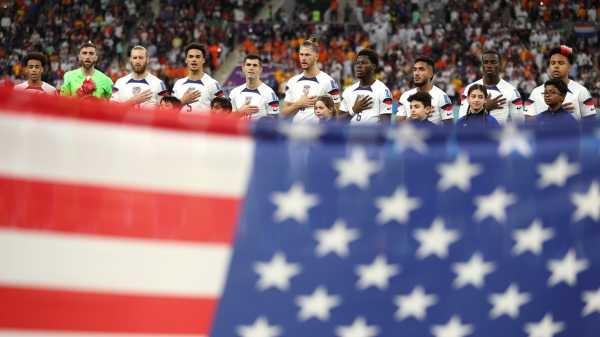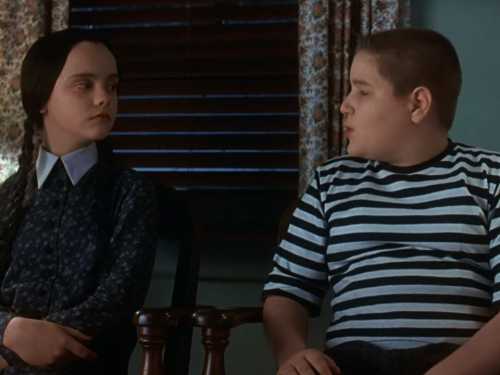
Many Americans felt the pain of World Cup soccer on Saturday, as the U.S. lost decisively to the Netherlands. There’s no shame in losing to the Dutch, who are considered the best nation never to have won the world’s largest soccer tournament, but this exit felt a little different. Even though the U.S. team has qualified for every World Cup except one since 1990, the ceiling for talent on this year’s young American squad was unusually high. So, too, were the expectations. If it’s the hope that kills you, as British fans like to say, then this sting of defeat in a major tournament feels like another small turning point in American soccer: to truly suffer is the mark of an actual soccer nation.
It’s hard to remember the way things used to be. That’s what fandom can do: it can pull you in so suddenly, totally, and emotionally that you forget how life was before. But for a long time in the United States, soccer was nearly invisible in the mainstream—a seldom-seen sport that inspired both ignorant dismissals and unfounded hatred. I spent the past several years on a time-travelling journey to soccer’s days of obscurity while writing a book, “New Kids in the World Cup,” about the 1990 American men’s team. By reaching the World Cup for the first time in forty years, these players rescued the sport from oblivion and sparked soccer’s rise to popularity in the United States, during an era when soccer was at its nadir. The only thing most Americans liked about soccer was the chance to ignore it. If they paid it any attention at all, it was to delight in how boring it was.
The contrast between then and now is almost overwhelming. In the nineties and the aughts, the North American league, Major League Soccer, had very uncertain prospects. M.L.S. is now a quarter century old and has more than two dozen teams—some of which are valued at more than eight hundred million dollars. In addition to providing regular soccer to local fan bases, the league develops talent and feeds American players into the national team. Like other leagues, it has to compete for attention with England’s popular Premier League—which now also features several high-profile Americans.
After Pelé’s brief seduction of the United States in the mid-seventies, when he dazzled for the New York Cosmos in the North American Soccer League, the sport flamed out so completely that, by the next decade, it was considered an embarrassing fad, like disco. It was seen as a participation sport for women and children that was unfit to attract paying fans. The thought leaders of this American-sports populism were newspaper sportswriters. Some of the small-press pack who followed the U.S. team in the late eighties resented having to cover soccer. On the eve of the team’s biggest game, against Trinidad and Tobago, some even seemed to be rooting for the U.S. to fail. So many columnists around the country have written their own version of the why-I-hate-soccer column that it became something of a tradition. I collected a whole stack of them as research. “You can’t sweetly control a ball using feet and head any more than you can drive a car fast with your nose and knees,” the Sports Illustrated legend Frank Deford once wrote. “It’s very boring. I can’t get excited even at my kid’s soccer game,” Bob Smizik of the Pittsburgh Post-Gazette confessed. And here’s the former pro quarterback turned congressman Jack Kemp: “A distinction should be made that football is democratic, capitalism, whereas soccer is . . . European socialist.”
When you read enough of these old anti-soccer rants, the logic starts to break down. The sport is adored by egalitarian communists as well as fascist dictators. Soccer fans are scrawny, intellectual bullies who hate American sports because they didn’t get picked to play them as kids—but they’re also brutes who just want to drink and fight one another. Because the use of hands isn’t generally allowed, soccer runs counter to evolution. (An entire sport and fan base cursed with dead-end genes!) The broadcaster Seamus Malin told me that many Americans he encountered in the seventies and eighties considered soccer the sport of “the others”: taxi-drivers, dishwashers, exchange students, uppity intellectuals, and hippies.
These days, few mainstream sportswriters would dare to write one of these columns. If one did, he’d be exposed as a dinosaur and would probably get tormented on social media. Even the current attempts by Fox News to make soccer a wedge issue feel half-hearted. In addition to a few thawed-out complaints about flopping foreigners and the sport’s lack of entertainment, the network’s pundits became enraged at the sight of the U.S. coach, Gregg Berhalter, wearing a Nike-made T-shirt that omitted “United” and simply read “States” (suggesting, one commentator thought, a divided nation—imagine that), and also at the decision of the U.S. Soccer Federation changing the “patriotic” row of red stripes in its logo to a rainbow color scheme. In polls, the sport still lags far behind American football in popularity among adults. And scoreless ties, such as in the U.S.’s much-hyped game versus England, still bring out the haters and trolls. Yet that game and other U.S. matches were TV-ratings successes. With every World Cup, soccer becomes more visible in the U.S., and now it’s finally O.K. for Americans to like it. To take that concept a shocking step further: it’s becoming uncool to hate it.
A large watch party I attended in San Diego on a bayside lawn felt like a slice of Americana. I was surrounded by the young, the old, and many families. Thousands of people were wearing U.S. jerseys emblazoned with the names and numbers of current stars or retired legends. On my book tour, I met young kids—who have no idea how good they have it as soccer fans now—as well as knowledgeable old fans who’d quietly been around all along, and everyone in between. I met hardy supporters who’ve travelled to nearly every U.S. game for years. And I talked to plenty of people who have bold ideas about the future of soccer in America—the next phases of its popularity, and how and where we’re going to experience the game one day. Even the evolution of U.S. fan chants are telling: the twenty-tens featured the saccharine “I believe that we will win,” while, at this World Cup, the sarcastic “It’s called soccer” chant felt like an assertion of power aimed at the sport’s traditional heavyweights.
This isn’t only about us. The U.S. playing and caring about soccer matters to the rest of the world a lot more than we think. It is, of course, the world’s game, the sport of the poor in most countries. In many places, it’s the only sport that matters. Important figures in other nations seem to view the U.S. playing their game as an honor and an opportunity. Back in 1989, when the young, anonymous U.S. team was toiling to qualify for the World Cup (some things never change), an unexpected visitor boarded the team bus after a match in Costa Rica. It was the nation’s President, Óscar Arias, who’d recently been awarded the Nobel Peace Prize. Arias felt compelled to give a speech to a bunch of tired athletes who just wanted to return to the hotel about how important the U.S. is to democracy in the world, explaining that their opponents that day were actually their allies. It’s difficult to imagine a scene like that happening to the soccer team of any other nation.
From the perspective of the American gaze, watching or even visiting the World Cup (including this year’s sportwashing spectacle) gives us a fresh view on things, outside the lines of typical media coverage and plotlines. The tournament is a world-stopping event in a way that the Olympics, atomized by all its boutique events, can never be. Soccer takes on many of the problems on this planet during the tournament, when the world is arguably more together than at any other time. Iranian players and supporters have demonstrated, at great risk, against the morality police’s crackdowns on women’s rights in their country. Arab fans from the region are making Palestine as visible as possible. Leaked photos of the Serbian team’s locker room show a flag of Serbia with a map that includes Kosovo as part of the country. The U.S. captain, Tyler Adams, beautifully answered a loaded question about race in America at a pre-game press conference. This tournament opens up the world a bit to the places that seem shut off from it. Isn’t it an odd coincidence that in this year’s group stage, the U.S. was pitted against a close political ally in England and Wales, as well as a fierce antagonist in Iran?
Most players tend to view political gestures as a distraction from the games themselves. But even taking the field against a political opponent is an act of foreign policy, never mind trading jerseys with them afterward, as soccer custom dictates. International soccer can be high-visibility, low-stakes diplomacy on grass as two nations compete within an agreed set of rules, with a neutral arbiter in charge and nothing material at stake. Two masses of patriotic supporters in festive spirits are sharing a stadium as the world watches. The players are all athletes simply in different colors. Following the U.S.’s victory over Iran, a remarkable video of the U.S.’s Antonee Robinson consoling Iran’s Ramin Rezaeian was widely circulated on social media. Meanwhile, in the stands that game, it was plain to see that the supporters of each country were neither hard-line religious zealots nor the Great Satan. They weren’t remotely enemies. They were that most common denominator among humans: they were soccer fans, like pretty much everyone else. ♦
Sourse: newyorker.com






